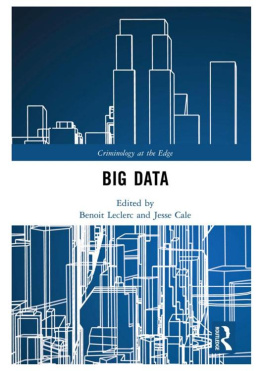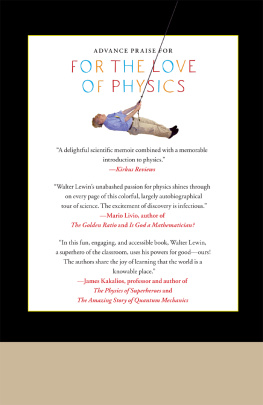Benoit Roman - Hidden wonders : the subtle dialogue between physics and elegance
Here you can read online Benoit Roman - Hidden wonders : the subtle dialogue between physics and elegance full text of the book (entire story) in english for free. Download pdf and epub, get meaning, cover and reviews about this ebook. year: 2020, genre: Romance novel. Description of the work, (preface) as well as reviews are available. Best literature library LitArk.com created for fans of good reading and offers a wide selection of genres:
Romance novel
Science fiction
Adventure
Detective
Science
History
Home and family
Prose
Art
Politics
Computer
Non-fiction
Religion
Business
Children
Humor
Choose a favorite category and find really read worthwhile books. Enjoy immersion in the world of imagination, feel the emotions of the characters or learn something new for yourself, make an fascinating discovery.

- Book:Hidden wonders : the subtle dialogue between physics and elegance
- Author:
- Genre:
- Year:2020
- Rating:5 / 5
- Favourites:Add to favourites
- Your mark:
- 100
- 1
- 2
- 3
- 4
- 5
Hidden wonders : the subtle dialogue between physics and elegance: summary, description and annotation
We offer to read an annotation, description, summary or preface (depends on what the author of the book "Hidden wonders : the subtle dialogue between physics and elegance" wrote himself). If you haven't found the necessary information about the book — write in the comments, we will try to find it.
Benoit Roman: author's other books
Who wrote Hidden wonders : the subtle dialogue between physics and elegance? Find out the surname, the name of the author of the book and a list of all author's works by series.
Hidden wonders : the subtle dialogue between physics and elegance — read online for free the complete book (whole text) full work
Below is the text of the book, divided by pages. System saving the place of the last page read, allows you to conveniently read the book "Hidden wonders : the subtle dialogue between physics and elegance" online for free, without having to search again every time where you left off. Put a bookmark, and you can go to the page where you finished reading at any time.
Font size:
Interval:
Bookmark:
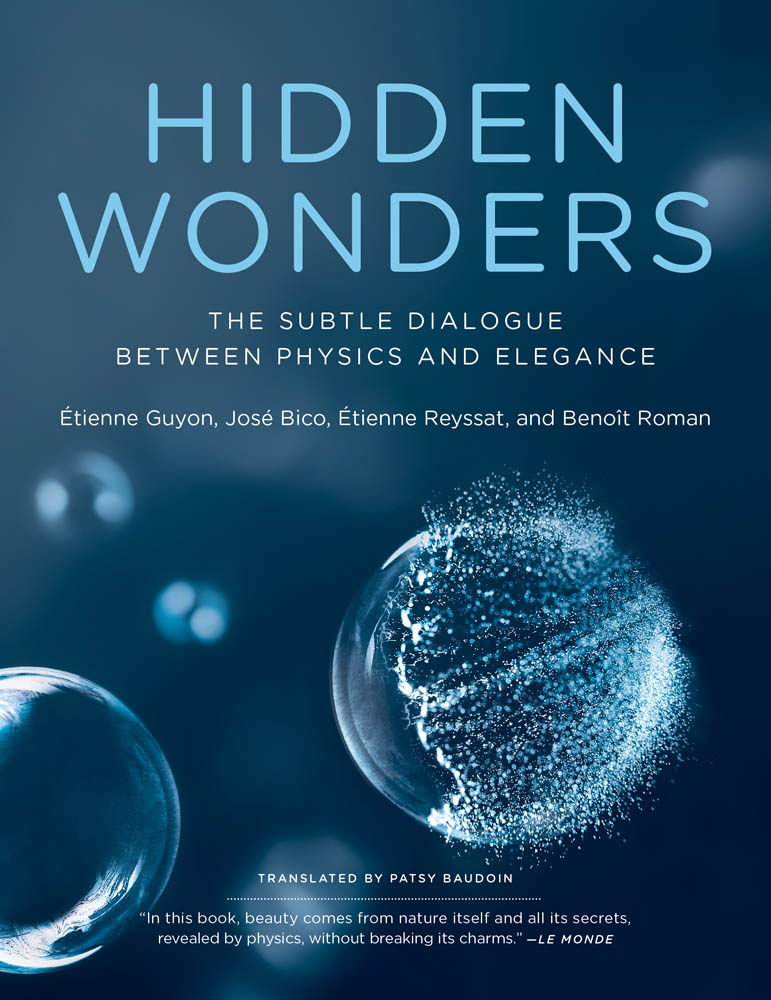
HIDDEN WONDERS
Translation copyright 2020 Massachusetts Institute of Technology
Flammarion, Paris, 2018, Du merveilleux cach dans le quotidien
Diagrams: Laurent Blondel / Cordoc
All rights reserved. No part of this book may be reproduced in any form by any electronic or mechanical means (including photocopying, recording, or information storage and retrieval) without permission in writing from the publisher.
Library of Congress Control Number: 2020934592
ISBN: 978-0-262-36364-8
d_r0
When admiring the structure of the Eiffel Tower, the patterns that clay makes when it cracks, a birds nest, the wavy edge of a leaf of lettuce, or even the way pole vaulters poles bend, as if they were about to break just as they propel vaulters into the air, you may have intuited that behind the objects that populate our daily life theres strange beauty, a beauty that seems to be the fruit of a natural or willed order or underlying organization, but also of a function whose meaning we actually perceive without always being able to grasp it.
The purpose of this richly illustrated book is to reveal this beauty by relearning to see the world around us. It is the work of a team of researchers at the ESPCI (cole Suprieure de Physique et de Chimie Industrielles de la Ville de Paris), and whose central themes lie where the physics of materials and mechanics intersect.
From the vaults of Azay-le-Rideau to soap foams, to a crumpled paper ball and a creeping vine bridge, the thirty-five themes addressed in this book might evoke an eclectic poetic inventory. This is not the case, of course: not satisfied to embody a fascinating dialogue among forms, forces, and functions, these subjects have in common the elegance of the shapes they exhibit, whether natural or human-made constructions.
You might rightly be surprised that the notion of elegance should be advanced in a book written by physicists. The term immediately evokes haute couture, which we will encounter in this book, but also harmony, delicacy, and simplicity. Thats why elegance makes sense in many other areas too: mathematicians, for example, are happy to talk about an elegant proof that makes it possible to reach a desired result: It was obvious; but we still had to come up with it! By revealing hidden elegance in various fields, we also want to shed a different light on our daily lives. Our ambition is to propose a certain way of looking, an art of observing at various scales, from the mite so dear to Pascal and La Fontaine to entire civil engineering constructions.
The starting point of this project was a large exhibition coordinated around the theme of Breaking/Flowing (Casser/Couler, later at Pariss science museum, Palais de la Dcouverte, under the title Ruptures). In keeping with our frequent participation in science fairs and other public events that present science as a hands-on pursuit, we have concluded each chapter with a short, illustrated, and easy-to-reproduce experiment.
Curiosity pushed us beyond this exhibition to explore other areas. Each chapter often resulted from sometimes unusual or random encounters with interlocutors from different spheres: master folders, glassblowers, wood carvers, cellists, artists and artisans, as well as research colleagues. The diversity of this book owes them a great deal.
The blog Hidden Wonders at https://blog.espci.fr/hiddenwonders/ supplements this book, with videos of experiments, relevant links, and bibliographic references, not to mention our new discoveries.
We invite you to explore with us some of the hidden wonders in our everyday life!
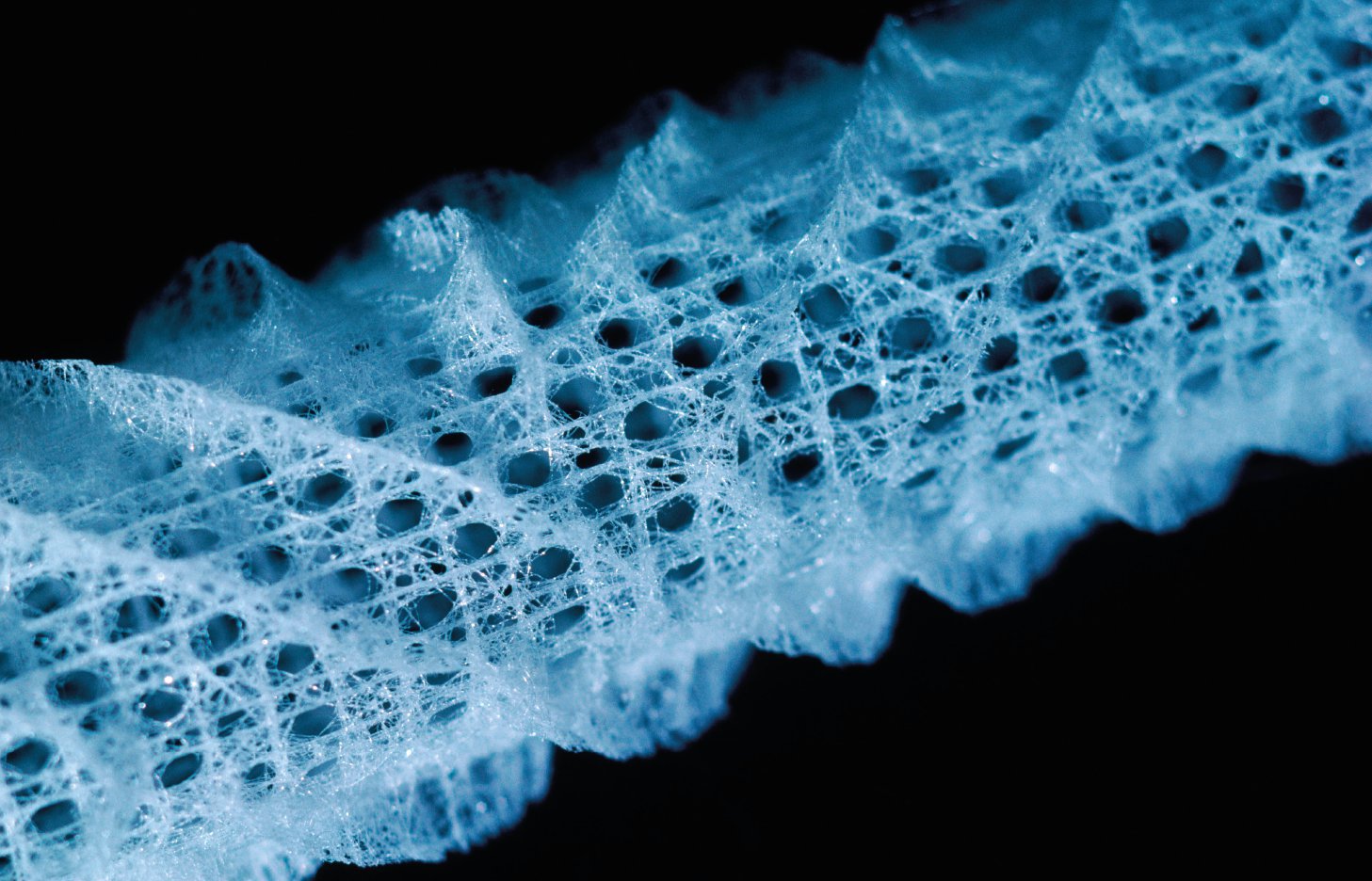
This incredible natural lace, about 10 centimeters long and 3 centimeters wide, is the Venus flower baskets skeleton, thus named because it constitutes a natural shelter for tiny crustaceans. The lattice structure is a twisted skein of fibers, themselves composed of silica grains welded together. Thanks to their hierarchical construction, these anonymous underwater beings seem to challenge masters of architecture such as Filippo Brunelleschi, Gustave Eiffel, and Frei Otto.
Plant, animal, and human constructions are subject to the same inescapable law: the taller they are, the more their shape must be gathered. Can a giant remain graceful?
The Cathedral of Santa Maria del Fiore in Florence, also known as the Florence Cathedral, one of the largest in Europe, is breathtakingly beautiful. Its ribbed vaults as well as its dome present shapes so simple and slender that at first we can imagine that building them was easy. Yet nothing could be further from the truth. The erection of this building began in 1300 and lasted more than one hundred years. During this period, the problem of what type of roof would cover the central part, the famous dome by Filippo Brunelleschi (13771446) and its impressive cupola measuring 45 meters in diameter, was left in abeyance. A real challenge for engineersthe construction of this dome alone would require forty years of additional work.
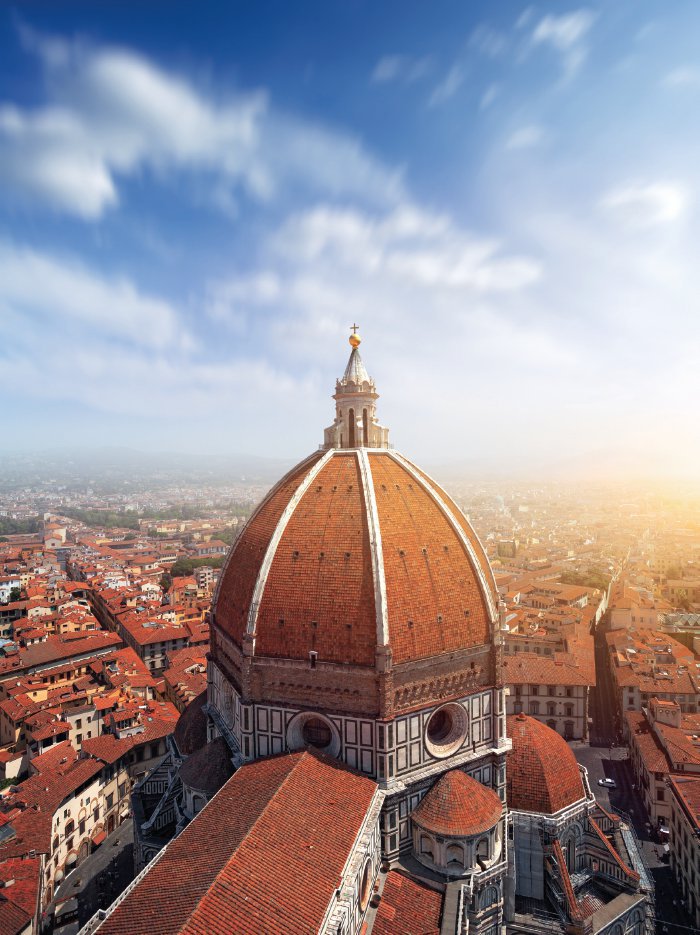
| The Florence Cathedral: more than one hundred and forty years of work for a building whose capping phase was a cupola measuring 45 meters in diameter. |
At the time, vaults were traditionally built on a centring in the shape of the structure in the making [ELEGANT STONE ARCHES] . Nonetheless, although this solution might work for structures a few meters high, it was unrealistic for this colossal cathedral. How to do this, therefore? The dome finally took shape thanks to the inventiveness of Brunelleschi, an artist and builder of genius: he imagined an ingenious, self-supporting framework, consisting of superimposed bricks canted layer by layer. To complete the project, Brunelleschi also designed cranes and other innovative devices, as evidenced in some of Leonardo da Vincis drawings.
Galileo Looks into Hell
But why is it so difficult to build big? To understand this, lets take a short detour via Galileo. Galileo is perhaps best known for his defense of heliocentrism, which started his troubles with the Catholic Church, but his contributions to modern science are many and varied. In particular, he had the brilliant idea of comparing objects of different sizes in order to study the relative effects of physical forces. He carried these studies throughout his life, and he gave them shape in a major work, Two New Sciences, which he wrote after being condemned, and whereby he invented the discipline of the strength of materials. The seeds of Galileos reflections can be found in a lecture he gave before the Academy of Florence at the beginning of his career. That presentation dealt with the geometric form of hell in Dantes famous Inferno. The site was described as a conical abyss dug beneath Jerusalem and covered with a dome (the earths crust), whose thickness Galileo was discussing. He imagined that the cover of the cave of Hell, which is a hundred thousand times wider than the dome of the Florence Cathedral, should therefore simply be a hundred thousand times thicker: a reasoning of proportionality that seems incontrovertible, but which assumes that identical shapes ensure the same solid strength.
Font size:
Interval:
Bookmark:
Similar books «Hidden wonders : the subtle dialogue between physics and elegance»
Look at similar books to Hidden wonders : the subtle dialogue between physics and elegance. We have selected literature similar in name and meaning in the hope of providing readers with more options to find new, interesting, not yet read works.
Discussion, reviews of the book Hidden wonders : the subtle dialogue between physics and elegance and just readers' own opinions. Leave your comments, write what you think about the work, its meaning or the main characters. Specify what exactly you liked and what you didn't like, and why you think so.




